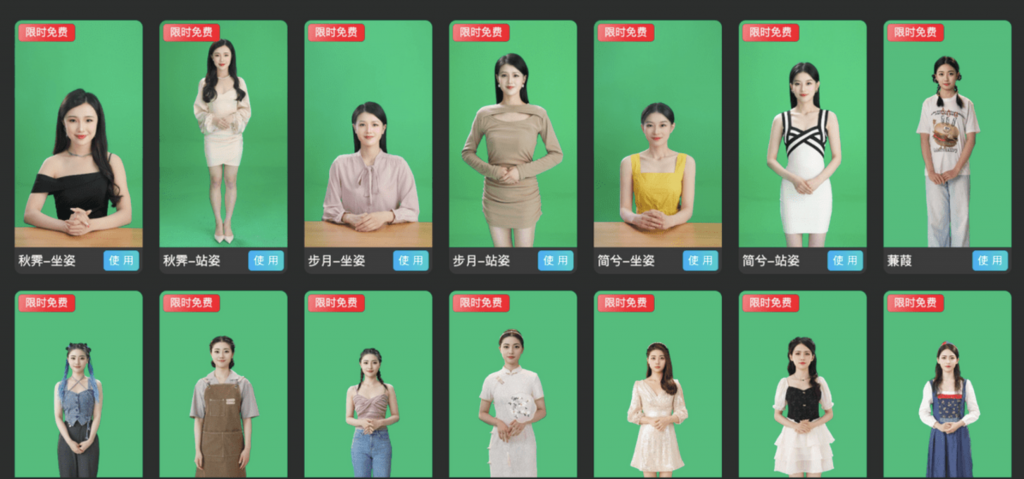In 2023, the idea of virtual humans is nothing new. Lil Miquela, a virtual model created by a Los Angeles-based startup, has 3 million followers on Instagram and kissed Bella Hadid for a Calvin Klein campaign. Imma, the first virtual human in Japan, has partnered with brands like SK-II, Tommy Jeans and Fenty.
The virtual human market is predicted to reach $440.3 billion by 2031, as reported by Allied Market Research.
They’re so influential, in fact, that in the West the trend has gone full-circle. Now, real human creators are emulating their virtual counterparts and ushering in the rise of the human “Non-Playable Character” (NPC).
NPC culture on TikTok#
On Western-facing platforms like TikTok, NPC livestreams are gaining traction.
NPCs are pre-programmed side characters in video games that aren’t controlled by the player. The term is commonly used by Gen Z to describe someone who is seen as generic, or who lacks independent thought. In NPC livestreams, creators pretend to be NPCs and react with specific catchphrases when given virtual gifts. For example, Pinkydoll, one of the most popular NPC livestreamers on TikTok, says “ice cream so good” when given an ice cream gift. She has over 950,000 followers, and regularly broadcasts to an audience of over 30,000 simultaneous watchers.
The rise in these polarizing yet neoteric trends have inundated smartphone screens across the globe over the past weeks. In China, hyper-realistic, AI-generated humanoids have grown on e-commerce platforms, while the West found itself mesmerized by a surge in NPC-like creators sharing catchphrases for cash.
In the West, human emulates machine. In China, machine emulates human.
Virtual livestream anchors#
Meanwhile, back in China, virtual influencers are also a source of controversy surrounding the age-old debate: Will machines replace humans? Virtual influencers are fully customizable, the IP lives forever, they don't get tired, sick or injured, and there's no risk of scandal.
Through the rise of generative AI, they are becoming more viable and cost-effective. Operating a livestream room is costly, at nearly $7,000 a month according to Baidu Intelligent Yunxiling. Yet luxury brands like Dior, Gucci, and Versace have understandably jumped on livestreaming, as 20 percent of all e-commerce in China is forecast to be done over the channel, according to eMarketer. Enter virtual human livestreams.
With both virtual humans and livestreaming displaying promising revenue potential, China’s top tech players have wasted no time amalgamating the two.
In April, Tencent Cloud released an intelligent low-cost digital human production platform, lowering the barriers of metahuman development across China. The tool combines several features, including rapid training, automated production and anchor customizations.

Search giant Baidu has also jumped onboard. Its cutting-edge digital human live broadcast platform, Baidu Intelligent Yunxi Ling, made a remarkable showcase this year. Powered by Baidu's advanced self-developed voice and vision technologies, the platform can recreate a digital human anchor in less than 30 minutes using a video of a real person. Technology underlying Baidu’s own version of ChatGPT, Ernie, will likely play a part.
Baidu’s virtual anchor enables users to seamlessly generate content like product introductions and more. As a result, Baidu says the cost of operating a livestream room can be reduced significantly, perhaps paving a way forward for clearer ROI on livestreaming through the use of virtual humans.

Shiseido’s virtual human livestream#
Brands are already listening, with China’s reigning players wasting no time in jumping on the hype. On July 25, beauty giant Shiseido appointed one of the country’s most popular virtual influencers, Ayayi, to endorse its Ultimune collection via Tmall’s livestreaming channel. China is Shiseido’s largest market, contributing 24.2 percent to the Japanese group’s overall sales in 2022.
The appearance was Ayayi’s livestreaming debut and follows her collaborations with beauty and luxury brands including Tiffany & Co., Guerlain, M.A.C cosmetics, Make up Forever, and L’Oréal Paris.

Fleeting hype or hard reality#
Are China’s virtual human livestreams just another fleeting trend as the livestream format matures? For example, with the rise of Apple’s “Buddhist” livestreaming format, demand for more informational and upscale content is on the up. Integrating expert knowledge and authentic credibility into virtual anchors remains challenging. They seem gimmicky now, yet are improving extremely fast.
It’s hard to ignore the sheer math of livestreaming’s increasing importance as a sales channel combined with the high cost of human anchors and the coming surplus of cash-poor brands in the slowing Chinese economy. Availability of budget-friendly and quality alternatives alone is likely to spell a substantial drive in demand for virtual anchors.
As the technology matures, virtual humans may become part of the marketing stack for success across China’s e-commerce retail landscape. Perhaps China’s virtual anchors will improve to the point where they are confused for a TikTok creator’s NPC livestream.


